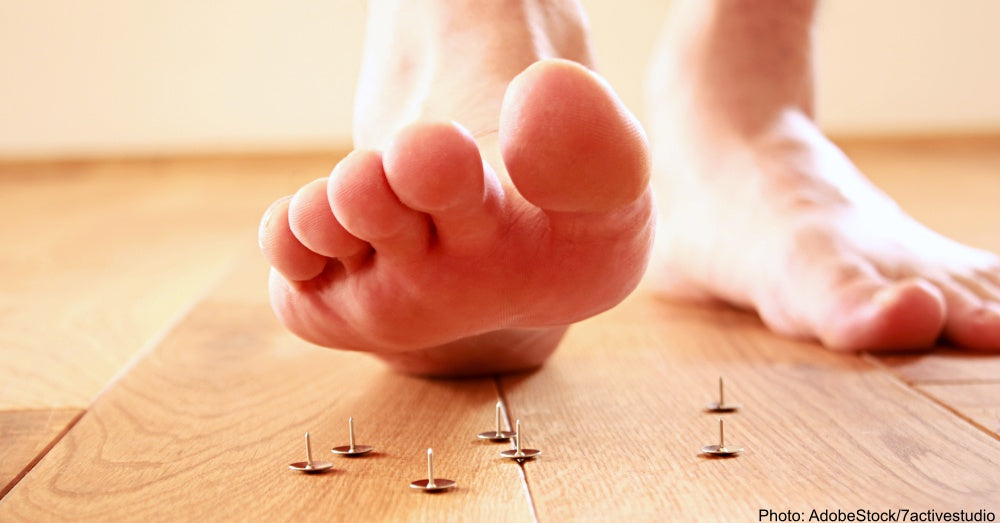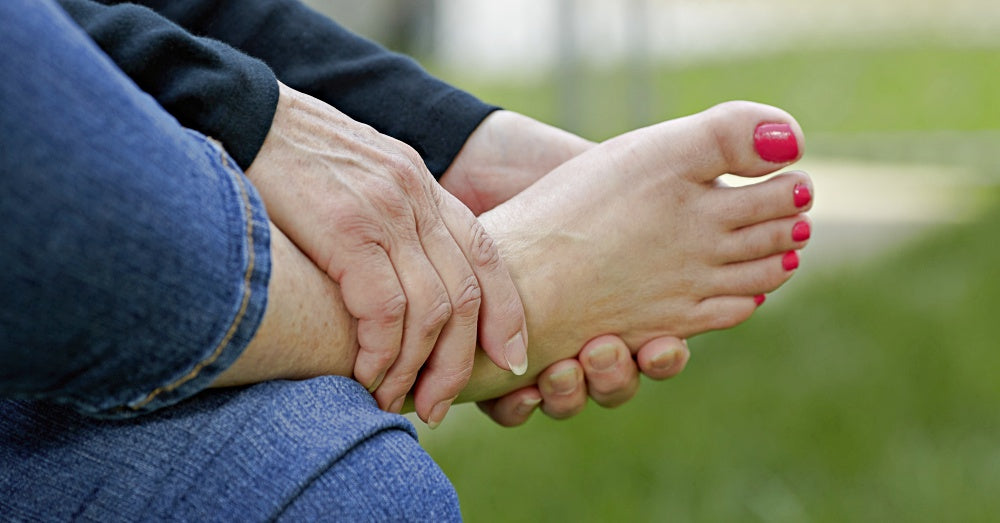Diabetes and Circulation: How To Get The Blood Flowing Again
Katie Taylor
Cold fingers? Tingling toes? For people with diabetes, the symptoms of poor circulation take many forms and range from irritating to potentially dangerous.
The ravages of high blood sugar are the root cause, but poor circulation manifests itself in two main ways:
Peripheral Arterial Disease (PAD)
PAD is a condition that causes decreased blood flow to your feet and legs. It happens when fatty deposits build up and blood vessels are hardened and constricted, making it more difficult for blood to reach your extremities. The American Diabetes Association estimates that 1 in 3 people with diabetes over 50 experience PAD. For the full article on the condition, click here.
 Photo: AdobeStock/wingedwolf
Photo: AdobeStock/wingedwolf
Peripheral Neuropathy
Neuropathy is another serious concern for people with diabetes: about half of those will develop the condition at some point in their lives. Peripheral neuropathy usually affects the feet and legs, but can affect other extremities as well. Chronic high blood sugar damages nerves, making someone less able to feel sensation and possibly causing numbness or tingling.
These two conditions are separate, but they both contribute to poor circulation. Poor circulation can lead to cold feet, numbness, slow-healing wounds, calluses, ulcers, infections, gangrene, or, in worst-case scenarios, amputation. For more information on the symptoms of neuropathy, click here.
 Photo: AdobeStock/Damian Gretka
Photo: AdobeStock/Damian Gretka
Symptoms of Poor Circulation
You many already know many of the symptoms of poor circulation: numbness, tingling, cold hands or feet, loss of sensation. But there are others that are less well-known:
- Hair loss on the affected areas.
- Pale blue skin on the affected area (for those with lighter skin).
- Dry, cracked skin.
- Brittle toe nails.
- Slow wound healing.
- Erectile dysfunction.
 Photo: AdobeStock/dmitrimaruta
Photo: AdobeStock/dmitrimaruta
Treatment and Prevention
There are drug treatment options for PAD and neuropathy. Pain relievers and blood thinners may improve blood flow and antidepressants and anticonvulsants may relieve the symptoms of neuropathy. There are even treatments using electronic nerve stimulation, infrared energy, or vascular surgery. Talk to your doctor for a full range of options. But there are also less extreme strategies. Let's start with the most well-known.
Tried and True Methods for Improving Circulation
Here are a few methods to improve your circulation that all the experts agree on:
- Quitting tobacco. Tobacco use wreaks havoc on your circulation. But quitting is certainly not easy. George wasn't ready to quit smoking until his doctor told him he could lose his foot. Watch George's story here.
- Avoid sitting for long periods of time. While you're at it, avoid crossing your legs. Blood flow will be further impeded if your body is cramped all the time and you don't give it the chance to move. Uncross your legs, wiggle those toes, and take a loop around the office now and then!
- Exercise. Exercise stimulates blood flow and improves the ability of the blood vessels to dilate, which means that they can deliver more oxygen to muscles and tissues. Exercise has short-term benefits, but consistent exercise can improve your circulation for the long-haul. You should work towards 30 minutes of moderate-intensity activity five days a week, but remember, small bits add up and any movement is better than none!
- Compression socks. If poor circulation is causing swelling in your legs, compression socks can help move fluid back up your legs and into your torso and prevent blood from pooling. You should talk to your doctor to see if compression socks might help you, and then check with your insurance carrier to see if they're covered.
- The big three: Control blood sugar, blood pressure, and cholesterol. These can all affect circulation, and if you weren't motivated to control these factors before, perhaps the risk of tingling feet or ulcers that won't heal will help get you make positive changes. Big changes can feel overwhelming, but remember that small steps count too!
 Photo: AdobeStock/mbruxelle
Photo: AdobeStock/mbruxelle
 Photo: AdobeStock/digitalskillet1
Photo: AdobeStock/digitalskillet1
 Photo: AdobeStock/russellg10
Photo: AdobeStock/russellg10
"NEXT" for less well-known ways to improve circulation!
More holistic methods to improve circulation
- Yoga/Stretching. Stretching can improve blood flow and therefore help your tissues, including your feet and legs, get the oxygen and nutrients they need to stay healthy. Yoga is a great way to get in a good stretch, but it can also help compress and decompress your veins, encouraging blood flow. Plus, it's a great way to relax, and that brings us to our next point...
- Relax/Manage Stress. Stress can negatively impact your blood glucose levels (especially for type 2s), which will damage your circulation over time. Stress increases heart rate and blood flow to your heart, brain, and skeletal muscles. That's helpful if you're trying to escape from a bear, but not so much if you are trying to encourage blood flow to your extremities. Relaxing reduces blood pressure and sends blood to your skin and extremities (while not neglecting the rest of your body). Practice breathing techniques, make time for yourself, and make a commitment to not sweat the small stuff.
- Put your feet up. Elevating your legs, either with an ottoman or by using a recliner, can encourage circulation. Sounds like just the thing to do while sipping a cup of tea...
- Have a cup of tea. Now, if you're having a cup of tea while relaxing with your feet up, then you're really at the top of your game! Medical News Today encourages us that the antioxidants in black and green tea can improve blood vessel health, and tea has been linked to a number of health benefits. White, green, and black tea all have the antioxidants to help improve blood flow, but if you're just looking for relaxation benefits, herbal teas can be equally soothing without any caffeine.
- Enjoy Omega-3s! Omega-3 fatty acids (the good kind of fat) can improve circulation and increase the good kind of cholesterol (HDL). You can find Omega 3 fatty acids in oily fish like salmon and tuna, plant oils like canola or soybean, and in walnuts. Consuming more Omega-3s has also been linked to better overall heart health.
 Photo: flickr/Robyn Lee
Photo: flickr/Robyn Lee
 Photo: flickr/Alper Mumcu
Photo: flickr/Alper MumcuSo there you have it! Hopefully these strategies help you get (and keep!) your blood flowing! Stay healthy, friends!

 Photo:
Photo: 
